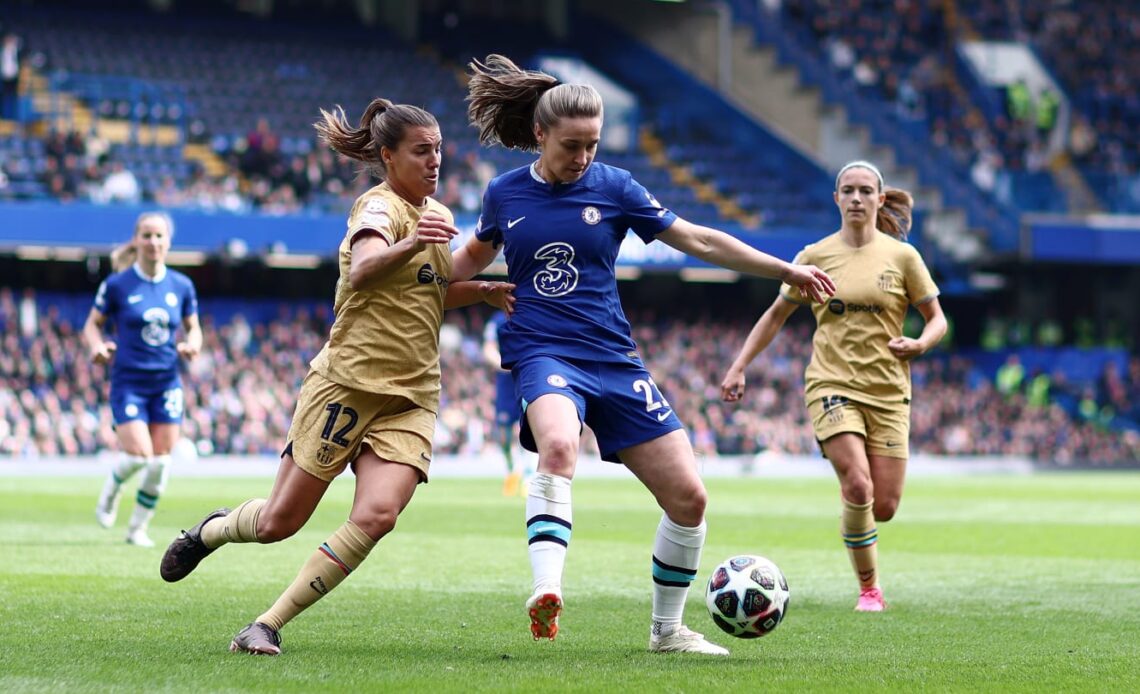Chelsea have a mountain to climb if they want to advance to this season’s Women’s Champions League final, tasked with having to beat Barcelona at Camp Nou in the semi-final second leg.
Jonatan Giraldez’s side have managed to excel as usual this season, with Liga F all but wrapped up after 25 wins from 25 games so far and and the Supercopa de Espana already won.
But Barcelona will be eyeing the UWCL, with memories of last year’s loss in the final still painful.
Standing in their way is at least 90 minutes against Chelsea, and although the Catalans lead the tie 1-0 on aggregate following the weekend’s first leg at Stamford Bridge, the Blues aren’t out yet, and may still have the abilities to hurt this Barcelona side.
Just four minutes into the match, Caroline Graham Hansen’s shot from the right handed Barcelona an early lead over Chelsea, providing the away side some breathing room early on.
The midfield trio of Aitana, Patri Guijarro, and Keira Walsh formed the backbone of Barcelona’s 4-3-3 formation, which focused on defensive security and attacking intent.
All season, Walsh has played a crucial role in initiating the team’s build-up from the back, using short passes to maintain control and create progression opportunities. Despite Chelsea’s tactical setup, Barcelona’s precise territorial coverage and patient approach allowed them to play with composure and secure an early advantage.
It wasn’t easy sailing for Barcelona over the course of the 90 minutes in west London though. Walsh faced difficulties as Jelena Cankovic was assigned to shadow her and prevent any vertical progress, which has been crucial to Barcelona’s build-up play all season.
Cankovic’s press was particularly effective in helping Chelsea regain possession high up the pitch. If Barcelona have any vulnerabilities, it comes when teams are able to press in their defensive third.
But Barcelona adjusted quickly. Patri took a step back to form a double-pivot alongside Walsh, providing an additional player to ease the pressure. As a result, the visitors were able to have a better grasp of possession, and they adapted by using faster passes to build-up.
In attack, Geyse, Salma Paralluelo, and Graham Hansen used their pace to run behind the Chelsea defense and draw players out of position into pockets of space, with the front three rotating between the half-spaces and central areas to try and come off as unpredictable as possible.
The front three also aimed to minimise width while still positioning…
Click Here to Read the Full Original Article at 90min EN…

